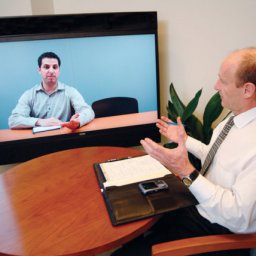Work used to be a place where you would go for only a set amount of time.
The idea of collaborating in real time across the world, or even the country, was still in its infancy. An always-on mobile device wasn’t in the pocket of every white-collar worker, delivering emails and assignments 24 hours a day, seven days a week.
Now businesses require that their employees be able to meet and collaborate, anywhere, anytime. Over 75 percent of the workforce will be mobile by 2016, and that trend is only going to increase. Most executives are looking for solutions that embrace this new way of working. You know that effective meetings, collaboration, and communication are key ways that today’s organizations create value, spur innovation, drive efficiency up, drive costs down, and manage their daily operations.
While many business technology solutions are competing for attention with claims of improving efficiency, productivity, and engagement, organization-wide video conferencing is a solution that hits on all three. To date, most room-based telepresence systems are sequestered to the executive suite, limited to use by senior leaders who conduct intercompany meetings with colleagues in other office locations.
By democratizing video conferencing within their organization, executives enable managers and employees to meet on their own terms and achieve greater impact by communicating more conveniently from any location, using any device.
The way we work has changed drastically in the last decade.




